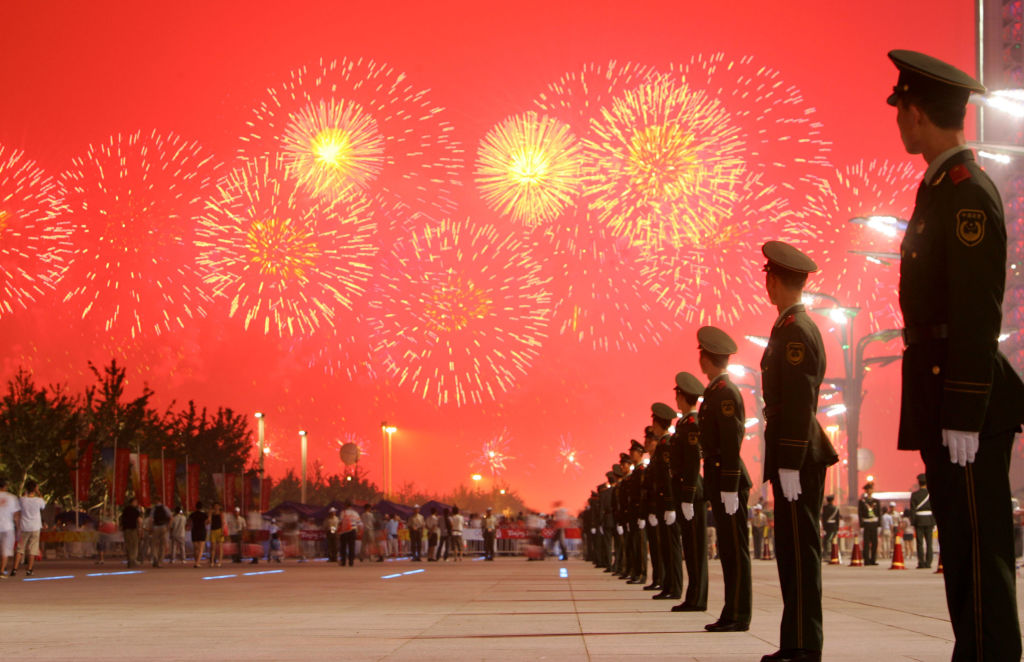Several years ago, I visited the War Remnants Museum in Ho Chi Minh City, Vietnam. It’s located, a bit surreally, in the former United States Information Agency building.
Formerly called the “Museum of Chinese and American War Crimes,” it showcases various captured US military equipment. What was particularly jarring to me was learning of the millions of Vietnamese civilians killed during the Vietnam War era.
Of course, there’s a bit of irony here: a building formerly dedicated to projecting American public diplomacy and messaging in Southeast Asia now serves the different propaganda purpose of seeking to portray America as a violent aggressor guilty of war crimes. Yet whatever the truth is about our nation’s checkered history in Vietnam, we should remember who catalogued much of those American atrocities through photographs, videos and news articles: American journalists.
It’s America, with its robust (if increasingly confused) understanding of free speech and political accountability, that sought an honest appraisal of its role in Asian history.
The same cannot be said for China, as Steven W. Mosher explains in his book Bully of Asia: Why China’s Dream Is the New Threat to World Order, now available in paperback. Only a few years after the collapse of the South Vietnamese government, China invaded the reunified country with 300,000 troops as punishment for Vietnam’s role in ending the Beijing-backed Khmer Rouge’s terror campaign in Cambodia that had killed two million people. The war, Vietnam claims, resulted in the deaths of 100,000 Vietnamese civilians. The Chinese government to this day claims that Vietnam was the aggressor in the conflict.
That’s a bit much, not only given the history of that war but China’s actions toward Vietnam ever since. In April and again in June 2020, Chinese maritime vessels rammed and sank Vietnamese fishing boats in the South China Sea. In July 2020, Hanoi canceled contracts with oil companies operating in these waters because of Chinese aggression, costing the Communist Party of Vietnam almost $1 billion.
Nor is Vietnam alone in this regard. Referring to its mythical “nine-dash-line,” Beijing has claimed sovereignty over practically the entirety of the South China Sea — and its estimated 11 billion barrels of untapped oil and 190 trillion cubic feet of natural gas — antagonizing competing claimants Brunei, Indonesia, Malaysia, the Philippines, Taiwan and Vietnam in the process. There are similar territorial disputes with Japan over the Senkakus in the East China Sea, and with India over the two nations’ land border, causing skirmishes that have periodically resulted in casualties. (Canada and the United States, by contrast, share the world’s longest undefended border, stretching 3,987 miles, and there hasn’t been violence over it in 200 years.)
China also leverages its client state North Korea to bully other Asian nations, particularly South Korea and Japan, via its frequent missile launches into the Sea of Japan. China supplies Pyongyang with most of its food and energy supplies, and frequently defends its impoverished and isolated neighbor in international forums. Mosher quotes former secretary of state Rex Tillerson: “As the principal economic enablers of North Korea’s nuclear weapon and ballistic missile development program, China and Russia bear unique and special responsibility for this growing threat to regional and global stability.”
Of course, China doesn’t want the world to perceive all this for what it is: bullying. That’s why it spends about $10 billion per year on its global propaganda machine, including state-run news agency Xinhua, which has 160 foreign bureaus around the world; China Radio International, which controls more than thirty radio stations in fourteen countries; and almost 100 global think tanks. It also includes 600 Confucius Institutes, which undermine academic freedom at host universities, monitor the activities of Chinese exchange students and engage in industrial and military espionage.
“China is literally spending tens of billions in influence operations around the world to enhance its own image and sully that of the United States,” says Mosher. That state-controlled influence operation calls the United States, among other things, a “dangerous enemy,” a superpower bully,” and a “hegemon on par with Nazi Germany.”
That’s a bit rich, given that the CCP for decades has pursued a global strategy of economic warfare, cyber warfare, information warfare and perhaps even biological warfare against America. Beijing has stolen billions of dollars in American intellectual property, including military technology like the F-35 Lightning II. It has undervalued its currency for decades, enabling it to dump cheap Chinese goods into world markets, including that of the United States, which has resulted in a record and unsustainable trade imbalance between the two countries. It’s also caused the closure of thousands of US factories, displacing almost four million American jobs.
Mosher believes there is significant evidence that the coronavirus amounted to nothing less than a biological warfare attack on the United States. Whatever the veracity of that allegation, it is no longer controversial to acknowledge that Chinese authorities lied about the origins and spread of Covid from the very beginning. More than half of all Americans, including a majority of Democrats, now believe the virus was made in a lab and released either accidentally or intentionally. But how many Americans know that Chinese authorities pursued their own bizarre anti-US disinformation campaign, fallaciously claiming that Covid was an American bioweapon created in the US Army’s research labs at Fort Detrick, Maryland?
Trying to paint America as the aggressor in the relationship is also risible, given that American support to open international markets to China brought hundreds of millions of Chinese citizens out of poverty. Nevertheless, Mosher notes that Chinese Premier Xi Jinping holds to a “Chinese dream” defined by Chinese global hegemony, and that the Chinese are taught that only America stands in the way of its realization. China, Mosher says, views her neighbors either as tributary states or potential enemies. Many Chinese students are schooled in Sino-American relations through the text A History of the U.S. Aggression in China, which is not only filled with inaccuracies but portrays the United States as villainous. Senior Chinese military figures such as General Chi Haotian have openly said that war between America and China is “inevitable.”
Nor is Chinese bullying only directed at external threats. Millions of Uighurs have been forced into re-education and forced labor camps. Chinese racism remains common and is directed against Uighurs, Tibetans and other minority groups. Depictions of blacks in Chinese media and entertainment are particularly egregious and demeaning, making America look post-racist by comparison. There’s even a word for the chauvinism common in Han Chinese culture: Dazhonghua Zhuyi, which Mosher describes as a “potent and peculiarly Chinese form of ultranationalism that relies in equal measure on collective narcissism and xenophobia.”
China isn’t just a problem for Asia. We might ask ourselves, warns Mosher, “why a country that is supposedly only interested in dominating its Asia-Pacific neighborhood should have just built a new military base in Djibouti, Africa.” Beijing is also extending its influence into the Caribbean through loans, investments, purchase of property and various public influence campaigns. The Bahamas is less than 300 miles from Florida.
Mosher urges aggressive action to confront this global threat. That includes a complete decoupling of the American economy from China’s, fighting and winning the war in cyberspace and demanding reparations from China for Covid — the last, though completely unrealistic, might serve as a good anti-PRC messaging campaign. With the world’s eyes focused on Russia’s belligerence in Eastern Europe, it’s easy to lose sight of the strategic threat posed by its Asian neighbor. As Mosher helps us see, we do so at our peril.


















